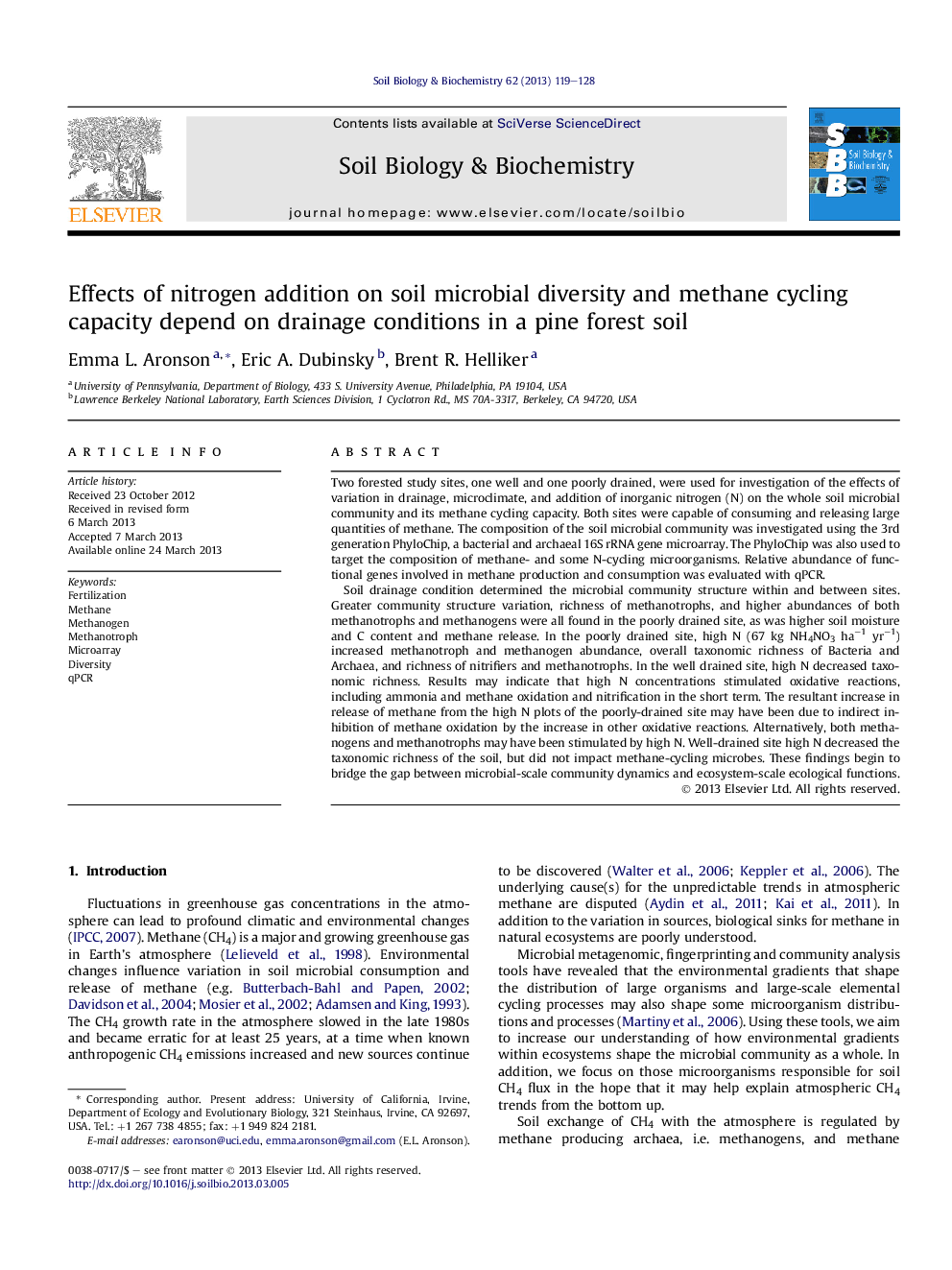| Article ID | Journal | Published Year | Pages | File Type |
|---|---|---|---|---|
| 8365248 | Soil Biology and Biochemistry | 2013 | 10 Pages |
Abstract
Soil drainage condition determined the microbial community structure within and between sites. Greater community structure variation, richness of methanotrophs, and higher abundances of both methanotrophs and methanogens were all found in the poorly drained site, as was higher soil moisture and C content and methane release. In the poorly drained site, high N (67 kg NH4NO3 haâ1 yrâ1) increased methanotroph and methanogen abundance, overall taxonomic richness of Bacteria and Archaea, and richness of nitrifiers and methanotrophs. In the well drained site, high N decreased taxonomic richness. Results may indicate that high N concentrations stimulated oxidative reactions, including ammonia and methane oxidation and nitrification in the short term. The resultant increase in release of methane from the high N plots of the poorly-drained site may have been due to indirect inhibition of methane oxidation by the increase in other oxidative reactions. Alternatively, both methanogens and methanotrophs may have been stimulated by high N. Well-drained site high N decreased the taxonomic richness of the soil, but did not impact methane-cycling microbes. These findings begin to bridge the gap between microbial-scale community dynamics and ecosystem-scale ecological functions.
Related Topics
Life Sciences
Agricultural and Biological Sciences
Soil Science
Authors
Emma L. Aronson, Eric A. Dubinsky, Brent R. Helliker,
